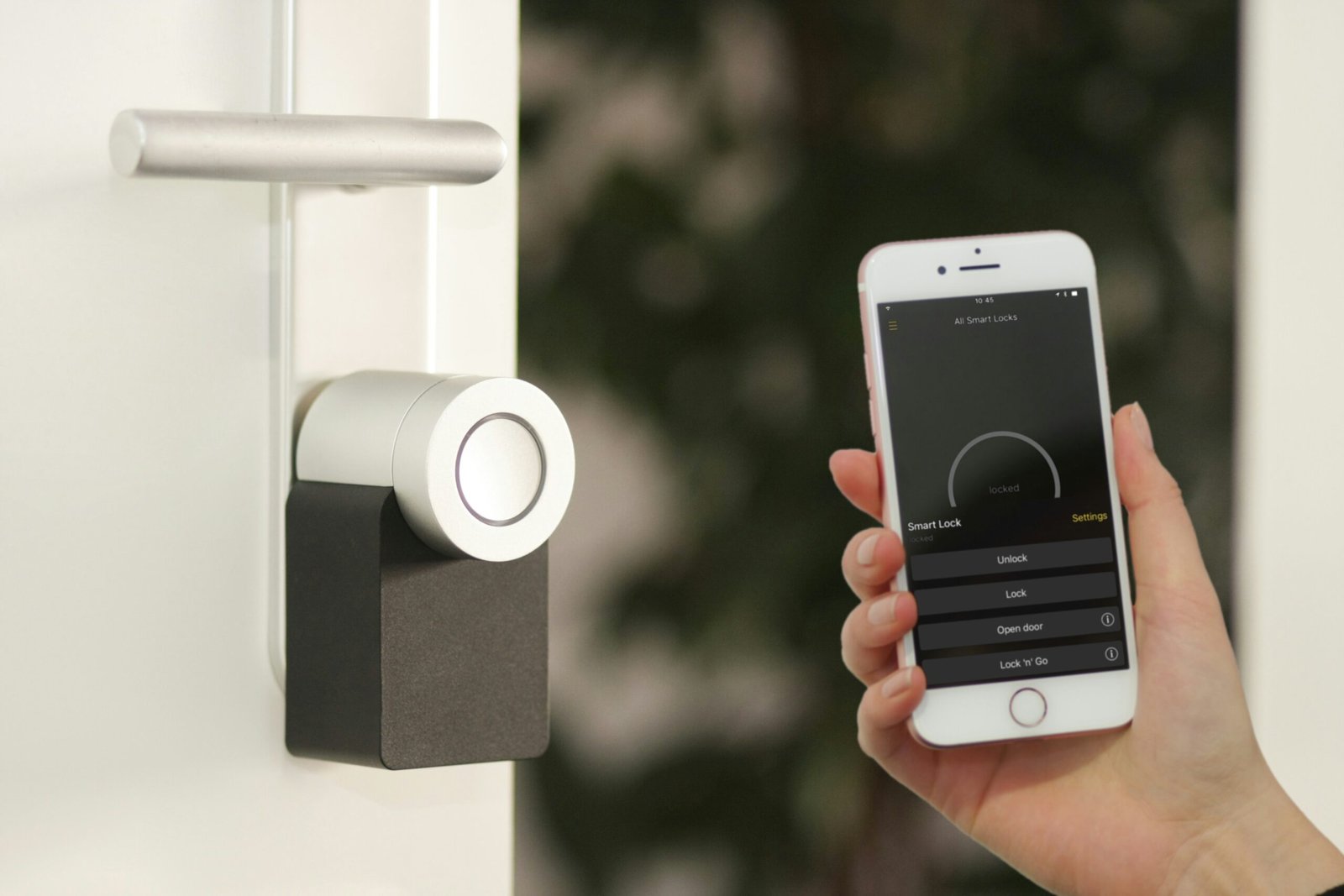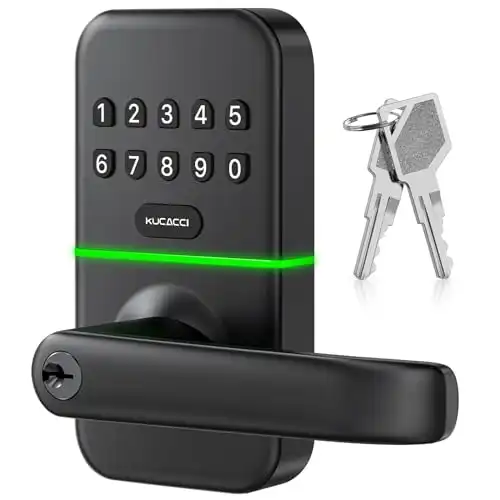Secure Your World, Smarter: Smart Locks

Smart Locks the Innovation of Home Security
Smart locks represent a significant advancement in door security technology, offering a blend of convenience, security, and modern innovation. Unlike traditional locks that depend on physical keys, smart locks utilize electronic mechanisms and digital communications to control access to homes. This evolution in locking systems has gained remarkable popularity among homeowners, driven by the increasing demand for enhanced security and seamless integration with smart home systems.
The advantages of smart locks over their traditional counterparts are manifold. One of the most compelling benefits includes the elimination of physical keys, which not only enhances security but also mitigates the risk of lost or stolen keys. Smart locks can be operated via smartphones or key fobs, allowing users to lock or unlock their doors remotely, thereby improving accessibility and the overall user experience. Moreover, many smart locks feature unique codes or temporary access credentials, enabling homeowners to grant entry to guests or service personnel without the need for physical keys.
Another remarkable aspect of smart locks is their compatibility with existing smart home ecosystems. These electronic door locks can often be integrated with home automation systems, allowing users to control their locks alongside lighting, security cameras, and other smart devices. This interconnectedness offers not only convenience but also the ability to monitor and manage home security from anywhere, making it a favored choice for tech-savvy individuals.
As the market for smart locks continues to grow, exploring the various models and their features will provide insight into the best options available. With a focus on security, convenience, and user-friendly interfaces, these locks are redefining the standards of home security, proving that technology can create safer and smarter living environments.
Eufy Video Smart Lock S330
The Eufy Video Smart Lock S330 combines advanced security features with an aesthetically pleasing design. It boasts a built-in 2K video camera for real-time monitoring, enabling users to see and communicate with visitors from their smartphones. Installation is straightforward, and the lock supports multiple entry methods, including fingerprint recognition, keypad access, and mobile app control. However, some users may find the video functionality drains battery life more quickly than standard smart locks.
Sifely Digital Electronic Lock
Sifely Digital Electronic Lock
The Sifely Digital Electronic Lock offers an intuitive biometric fingerprint sensor and a portable remote. This lock is renowned for its easy installation and user-friendly interface. The touch keypad is responsive, while the smart lock can be controlled via smartphone, making it a convenient option for homeowners. One downside is that it lacks a video surveillance feature; nonetheless, its reliability and security standards are commendable.
Samtecht Keyless-Entry Keypad Fingerprint Smart Lock
samtechT Keyless-Entry Keypad Fingerprint Smart Lock
This Samtecht lock emphasizes the importance of both security and convenience. Featuring a combination of fingerprint scanning and a numeric keypad, it provides multiple methods of access. The lock is fully weatherproof, enhancing its durability. The setup process is simple, aimed at non-technicians. On the flip side, some users have noted a slight delay when scanning fingerprints, which can be inconvenient during hurried exits.
Kucacci Keyless Entry Door Lock
Kucacci Keyless Entry Door Lock
The Kucacci Keyless Entry Door Lock is designed for those who prioritize a secure yet stylish entry solution. It features a sleek design with a user-friendly keypad. The advanced locking system prevents unauthorized access. Additionally, it offers a temporary code feature, making it ideal for guests. However, it may lack some of the sophisticated features found in other models, such as smartphone connectivity.
Smonet Fingerprint Electronic Deadbolt
SMONET Fingerprint Electronic Deadbolt
Recognized for its solid construction, the Smonet Fingerprint Electronic Deadbolt offers dual functionalities: fingerprint recognition and traditional keys. Its installation is seamless, and it supports multiple user fingerprints. The deadbolt’s high-security grade ensures durability. A potential drawback is that the fingerprint sensor can be finicky at times, particularly in colder environments.
Yamiry Fingerprint Lock
The Yamiry Fingerprint Lock is highlighted for its ultra-secure design, housing advanced anti-theft technology. It offers quick access through fingerprint scanning and comes with a backup key option. The lock’s battery life is substantial, appealing to those who prefer minimal maintenance. However, some users have suggested that the fingerprint recognition may sometimes require multiple attempts, potentially undermining its convenience.
Eufy Security Smart Lock C220
Lastly, the Eufy Security Smart Lock C220 integrates seamlessly with other Eufy devices, creating a cohesive smart home ecosystem. It supports remote access, voice commands, and features an easy-to-use app. The installation is user-friendly, and the lock’s sleek design complements any door. Nevertheless, its reliance on the Eufy app may pose challenges for users unfamiliar with technology.
Features to Consider When Choosing a Smart Lock
When selecting a smart lock, consumers must evaluate several critical features to ensure that the device meets their security and convenience needs. One of the foremost considerations is the connectivity option. Smart locks typically operate via Wi-Fi or Bluetooth, each offering distinct advantages. Wi-Fi-enabled locks allow for remote access and monitoring, which is beneficial for homeowners who travel frequently or require control from anywhere. In contrast, Bluetooth locks tend to offer faster interactions within a limited range, making them ideal for everyday use without the need for internet access.
Accessibility also plays a crucial role in the decision-making process. Smart locks may offer a variety of entry methods, including keypads, fingerprint scanners, and mobile applications. Keypad systems provide a reliable method for multiple users, particularly in shared living situations. Fingerprint access offers enhanced security and convenience, eliminating the need for physical keys. Mobile app controls allow users to manage and monitor their locks from their smartphones, adding a layer of flexibility for modern lifestyles.
Another essential factor to consider is the availability of backup key options. While smart locks are lauded for their advanced technology, having a physical key can be invaluable during power outages or technical malfunctions. Thus, investigating whether the lock can accommodate traditional keys or mechanical overrides will help enhance overall reliability.
Battery life is likewise a pivotal consideration. Most smart locks operate on batteries, and it’s critical to understand how often they will need replacement. Locks with longer battery life can offer greater peace of mind, reducing the frequency of maintenance tasks. Lastly, examining the security ratings of a smart lock should not be overlooked. Certifications from reputable organizations can provide assurance of a product’s durability and effectiveness against unauthorized access.
Conclusion and Recommendations
Throughout this exploration of the smart lock revolution, we have examined various electronic door locks, highlighting their features, advantages, and potential drawbacks. Each model offers unique elements that cater to different user preferences and requirements, making the choice of a suitable smart lock a personalized decision.
For budget-conscious consumers, we recommend considering models that balance affordability with essential features, such as basic remote access and keyless entry. Options in this category often provide adequate security without overwhelming the user with complex functionalities. Alternatively, homeowners seeking advanced technology may lean towards models that integrate seamlessly with home automation systems, offering comprehensive smart home security solutions.
In terms of ease of use, user-friendly interfaces and straightforward installation processes can significantly enhance the experience for those who may not be technologically inclined. Smart locks that offer intuitive mobile applications often score high in this regard, allowing users to manage access for guests and family members effortlessly. Such conveniences make it easier to monitor entry points without needing to juggle physical keys.
Moreover, security features should be a prominent factor in decision-making. Locks that provide additional layers of protection, such as encryption or two-factor authentication, stand out as wise investments for those prioritizing safety. It is essential to ensure that the selected lock meets industry standards for security, offering peace of mind for the homeowner.
In conclusion, the ideal electronic door lock will vary based on individual needs and preferences. By considering factors such as budget, ease of use, and advanced features, readers can make informed decisions that not only enhance their home security but also simplify their daily lives. Exploring various models and their functionalities will ultimately lead to a choice that aligns best with personal needs and lifestyle.

